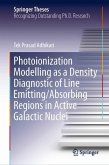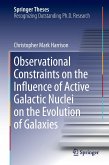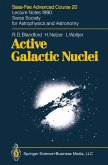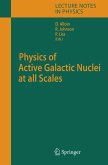This book presents timely work on the nature of the physical processes underpinning two of the basic characteristics of the gas structure in the innermost region of Active Galactic Nuclei (AGN): ionized outflows and emission line regions. In addition, it describes physics-based methods for estimating the density of the astrophysical plasma surrounding AGN. All numerical computations of the photoionized gas employ the most advanced codes available (CLOUDY and TITAN). Calculations of the radiative transfer are based on the assumption of thermal and ionization equilibrium. Promising preliminary examples of comparison with current observations are included for several individual AGN. All of them suggest that the absorbing/emitting gas should have a density on the order of 1012 cm-3. Future observations will provide more objects to verify these results, and will allow us to put constraints on the launch radius of ionized outflows and therefore on the mass loading and kinetic energy outflow rates. These rates, in turn, are crucial to estimating whether the outflows have a significant feedback impact on star formation and metal enrichment in the interstellar medium of the host galaxy. In closing, the book discusses a representative example of applying powerful photoionization techniques to explain the complex physics of the AGN environment.








